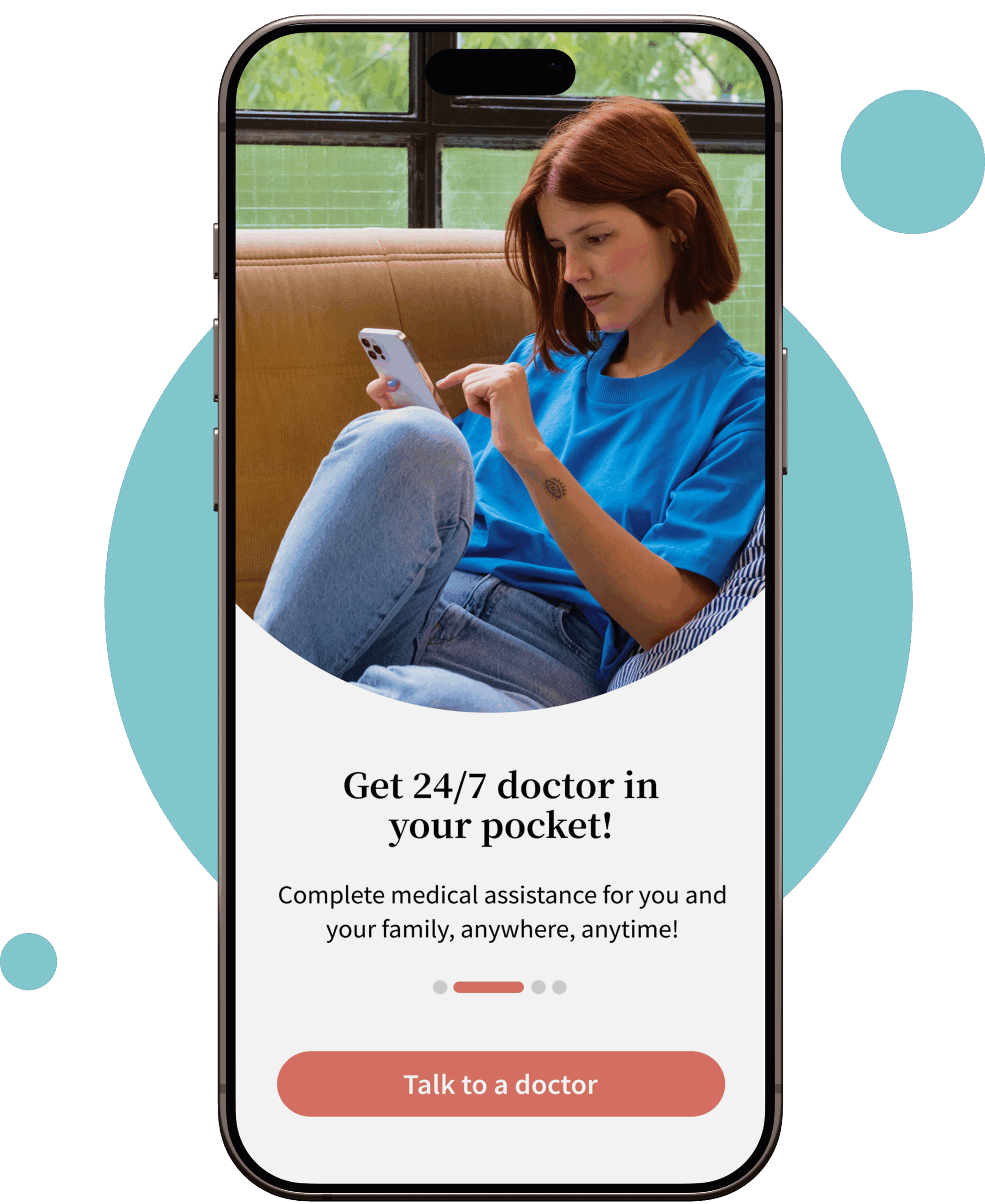Overview
Gout is an inflammatory condition resulting from elevated serum uric acid concentrations. Prednisone for gout is commonly prescribed for an acute attack of gout. Being a corticosteroid, it helps reduce inflammation. Prednisone is available in tablet or liquid form and is used to treat several conditions, such as allergies, asthma, rheumatoid arthritis, lupus, vasculitis, and multiple sclerosis symptoms.
Gout flare-ups are excruciating and can last several days to a week or even longer. This article will help you decide whether Prednisone for gout flare is the best treatment choice, discuss the benefits of using steroids for gout, and provide detailed information regarding the correct dosage of Prednisone for gout.
Will prednisone help a gout attack?
Yes, prednisone can be helpful in managing a gout attack, but it is not a first-line treatment. Prednisone is a corticosteroid that can reduce inflammation, swelling, and pain associated with gout flare-ups. It may be used in certain situations, especially if other medications are not effective or if the patient cannot tolerate nonsteroidal anti-inflammatory drugs (NSAIDs) like ibuprofen or indomethacin.
How does Prednisone work on gout?
Prednisone for gout or methylprednisolone for gout quickly lowers inflammation, reducing pain, redness, and swelling. Sometimes, the immune system has an overactive response and attacks your healthy body’s tissues. In such cases, Prednisone helps to stop that attack. Additionally, low-dose Prednisone may slow joint damage. However, it may also cause unpleasant long-term side effects. Prednisone dose for gout will vary from individual to individual.
How quickly does Prednisone work for gout?
Your prednisone pack for gout can take up to 2 hours to work. Delayed release tablets of Prednisone start working in 6 hours. Once you stop taking the medicine, the medicine gets eliminated quickly.
How much prednisone prednisone for a gout flare-up?
Prednisone is often prescribed for acute gout flare-ups to reduce inflammation and pain. The dosage of prednisone can vary depending on the severity of the attack, the patient’s health condition, and the doctor’s recommendations. Below is a general guideline for adults and children, but it’s important to follow a doctor’s specific instructions.
For Adults:
- Initial Dose: For an acute gout attack, adults are often prescribed 30-40 mg per day of prednisone. In case of a flare-up, a high-dose of 80 milligrams/day may be prescribed. Your healthcare provider may initiate a bridge therapy instead, putting you on a lower dose while waiting for another medication to work. A low-maintenance dose of 5-10 milligrams/day may be prescribed for a long duration to manage inflammation levels.
- Tapering Down:
Oral Prednisone prescribed to treat acute gout flares is started at 30 mg to 40 mg per day until symptom improvement, which usually occurs in 5 days. This can be increased to 21 days in patients with multiple episodes of flares. The dosage is typically reduced gradually over 5-10 days to avoid withdrawal symptoms. For example, a common tapering schedule could look like:
- Day 1-2: 40 mg daily
- Day 3-4: 30 mg daily
- Day 5-6: 20 mg daily
- Day 7-8: 10 mg daily
- Day 9-10: 5 mg daily, then stop.
- Short-Term Use:
Prednisone is usually prescribed for short-term use (typically no more than 10 days) during a gout flare-up to manage pain and inflammation quickly.
For Children:
- Initial Dose: Prednisone is generally not the first treatment choice for children with gout, but if prescribed, the typical dosage ranges from 1-2 mg/kg per day, divided into 2-4 doses.
- Tapering Down: Similar to adults, the dosage may be tapered down gradually based on the child’s response to treatment. A pediatric healthcare provider will determine the appropriate tapering schedule based on the child’s specific needs and condition.
Important Considerations:
- Monitoring: Long-term or high-dose use of prednisone may cause side effects like weight gain, high blood sugar, or increased risk of infection, so regular monitoring by a healthcare provider is necessary.
- Individual Variations: Dosage may vary based on the patient’s age, weight, and any pre-existing conditions (e.g., kidney disease, diabetes).
What are the side effects of taking Prednisone for gout?
Oral steroids can cause systemic side effects. Taking a high dose over a prolonged period makes you more prone to prednisone side effects. Common side effects include:
- High blood pressure
- Increased risk of infection
- Eye problems, including glaucoma or cataracts
- Osteoporosis
- Mood swings
- Diabetes
- Delayed Wound Healing
- Weight gain
- Stomach upset
- Puffy face
- Water retention
- Weight gain
What is the alternative medication for gout?
When it comes to managing gout, there are several alternative medications to prednisone that are commonly used to treat both acute flare-ups and long-term prevention. These alternatives target different aspects of gout, such as inflammation, pain relief, and uric acid levels. Here’s a comprehensive list of alternative medications for gout treatment:
NSAIDs (Nonsteroidal Anti-Inflammatory Drugs) for gout
Common Examples: Ibuprofen, Indomethacin, Naproxen
- How They Work: NSAIDs are often the first-line treatment for acute gout attacks. They help reduce inflammation, pain, and swelling. These medications work by blocking the enzymes (COX-1 and COX-2) that produce prostaglandins, chemicals involved in inflammation.
- When Used: Primarily for managing pain and inflammation during a gout flare-up.
- Side Effects: Long-term use may lead to gastrointestinal issues, kidney damage, or cardiovascular problems, especially in individuals with underlying conditions.
Colchicine for gout
- How It Works: Colchicine is another common medication used to treat gout. It works by reducing the inflammation caused by the uric acid crystals in the joints. Colchicine interferes with the movement of white blood cells that are involved in the inflammatory response.
- When Used: It can be used for both acute gout attacks and as a preventive treatment, especially for individuals who can’t tolerate NSAIDs.
- Side Effects: Common side effects include gastrointestinal issues like diarrhea, nausea, and abdominal pain.
Uric Acid-Lowering Medications (Long-Term Management) for gout
- Allopurinol
- How It Works: Allopurinol reduces the production of uric acid in the body by inhibiting the enzyme xanthine oxidase. By lowering uric acid levels, it helps prevent the formation of uric acid crystals that cause gout. Genetic testing for a variant called HLA B*5801 may occur before starting allopurinol because those with this gene are prone to develop a severe allergic reaction.
- When Used: Used for long-term management to prevent gout attacks rather than treat an acute flare-up.
- Side Effects: Skin rashes, gastrointestinal upset, liver function abnormalities.
- Febuxostat
- How It Works: Febuxostat works similarly to allopurinol by lowering uric acid levels. It is also a xanthine oxidase inhibitor but is sometimes preferred in patients who do not tolerate allopurinol.
- When Used: Used as a long-term treatment to manage gout and prevent attacks.
- Side Effects: Liver function abnormalities, nausea, headache.
- Probenecid
- How It Works: Probenecid increases the excretion of uric acid in the urine by blocking the reabsorption of uric acid in the kidneys. This helps lower uric acid levels in the body.
- When Used: Used for long-term treatment to prevent gout attacks, especially in patients who can’t tolerate allopurinol or febuxostat.
- Side Effects: Kidney stones, gastrointestinal upset, rash.
Corticosteroids (Other Than Prednisone) for gout
Examples: Methylprednisolone, Triamcinolone
- How They Work: Like prednisone, these corticosteroids reduce inflammation and pain during an acute gout attack by suppressing the immune response.
- When Used: Used when NSAIDs and colchicine are not appropriate or effective.
- Side Effects: Weight gain, mood changes, high blood sugar (especially for long-term use), and increased risk of infections.
Biologic Medications (CGRP Inhibitors) for gout
Examples: Canakinumab, Rilonacept
- Side Effects: Risk of infections, injection site reactions, potential liver enzyme changes.
- How They Work: These newer biologic treatments target specific molecules involved in inflammation. For example, canakinumab is an interleukin-1 (IL-1) inhibitor that helps reduce inflammation and pain during acute gout attacks.
- When Used: They are generally reserved for patients with frequent or severe gout attacks who have not responded well to other medications.
When to consult a doctor?
If you’re experiencing frequent or severe gout attacks, it’s important to consult a doctor for proper diagnosis and treatment. Early intervention can help manage symptoms, prevent joint damage, and improve long-term outcomes.
- Severe or Sudden Pain: If you experience intense pain in a joint, especially in the big toe, seek medical attention.
- Frequent Gout Attacks: If gout attacks occur more than once a year, consult a doctor for a long-term management plan.
- Uncontrolled Inflammation: If swelling and redness persist despite treatment, it may indicate a need for a different medication or diagnosis.
- Inability to Move the Affected Joint: It could signal severe damage or complications if you cannot move or bear weight on the affected joint.
- Kidney Problems or Risk Factors: If you have kidney disease or risk factors (e.g., high blood pressure), consult a doctor before starting new medications.
- No Relief from Home Treatment: If over-the-counter medications like NSAIDs or colchicine do not ease the pain, a doctor may prescribe stronger treatments.
- Signs of Infection: If the affected joint becomes warm to the touch, feverish, or redder, seek immediate medical care to rule out an infection.
- Recurrent Gout despite Medication: If you continue to experience gout attacks despite taking uric acid-lowering medications, your treatment plan may need adjustment.
By recognizing these signs early, you can work with your doctor to manage gout effectively and prevent future attacks.
FAQs about Prednisone for gout
If treatment is started promptly, symptoms should improve within 3 days. Without treatment, symptoms can last 2 weeks or longer. Keeping yourself hydrated can help flush out urate crystals, and managing your diet can greatly impact your recovery.
NSAIDs, Prednisone and colchicine, can be prescribed simultaneously in cases of a severe gout flare or flare-up that involves several joints.
Colchicine is considered the drug of first choice for acute gout attacks. Although, guidelines recommend the use of NSAIDs and systemic corticosteroids as well. Colchicine is effective for preventing gout flares in adults, but it does alleviate pain.
Therefore, for acute fare-ups, Prednisone is used for the treatment at a dosage of 30 mg to 40 mg per day until symptoms improve.







